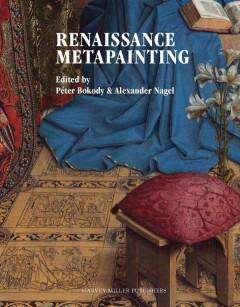
Je cadeautjes zeker op tijd in huis hebben voor de feestdagen? Kom langs in onze winkels en vind het perfecte geschenk!
- Afhalen na 1 uur in een winkel met voorraad
- Gratis thuislevering in België vanaf € 30
- Ruim aanbod met 7 miljoen producten
Je cadeautjes zeker op tijd in huis hebben voor de feestdagen? Kom langs in onze winkels en vind het perfecte geschenk!
- Afhalen na 1 uur in een winkel met voorraad
- Gratis thuislevering in België vanaf € 30
- Ruim aanbod met 7 miljoen producten
Zoeken
Omschrijving
Metapainting refers to the ways in which artworks playfully reveal or critically expose their own fictiveness, and is considered a constitutive aspect of Western art. Its rise was connected to changes in the consumption of religious imagery in the sixteenth century and to the advent of the portable framed canvas, the single most important medium of modernity. While the key initial contributions of some Renaissance painters from Jan van Eyck to Andrea Mantegna have always been acknowledged, in the principal narrative the Renaissance has largely remained the naive moment of realistic experimentation to be ultimately superseded by the complex reflexive developments in Early Modern art, following the Reformation. Aiming to challenge this view, this volume examines how painters interrogated the constructed nature of representation before 1500, and evaluates the possibilities of a critical pictorial vocabulary in the predominantly religious framework of Latin Christianity. The contributions delve into an analysis of illusionism, embedded images, subversive attributes, equivoque frames, transparent veils and the staging of the painter at work. The case studies trace these issues in mural and panel painting, as well as in book illumination on both sides of the Alps, and reconstruct their invention and reception during the Italian and Northern Renaissance. The collection also features the first-ever English translations of seminal articles by Andre Chastel (1964), Klaus Kruger (1993) and Wolfgang Kemp (1995).
Specificaties
Betrokkenen
- Auteur(s):
- Uitgeverij:
Inhoud
- Aantal bladzijden:
- 352
- Taal:
- Engels
- Geïllustreerd:
- Ja
Eigenschappen
- Productcode (EAN):
- 9781912554263
- Verschijningsdatum:
- 9/07/2020
- Uitvoering:
- Hardcover
- Formaat:
- Genaaid
- Afmetingen:
- 226 mm x 287 mm
- Gewicht:
- 1837 g

Alleen bij Standaard Boekhandel
+ 265 punten op je klantenkaart van Standaard Boekhandel
Beoordelingen
We publiceren alleen reviews die voldoen aan de voorwaarden voor reviews. Bekijk onze voorwaarden voor reviews.









